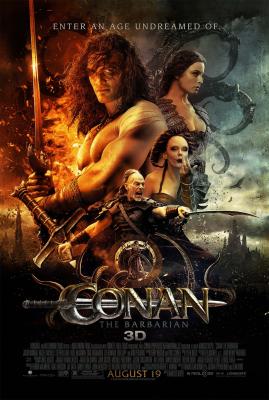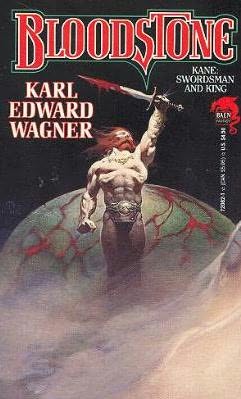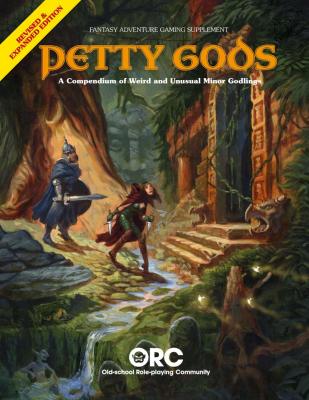I’ve been working on the Ancient Lands setting for a bit over four years now, and it seems a pretty regular ocurance that I feel like I went completely wrong somewhere and have to start all over. I think this is about the fifth time that I am sitting down to try to define the core concept of the world and pick the basic elements that are going to go into it. Though it’s not all in vain, as I am not completely starting all over again. It’s more like disassembling the whole thing and trying to put the pieces together in slightly different way, making some modifications at some parts while a few get discarded and perhaps replaced by something new. Or to use the poetic analogy I’ve heard somewhere, it’s like the waves on the beach, going back and forth, but each time getting a bit higher up the sand. Two steps forward, one step back. And I think I’ve come really pretty far by now. That I announced completion a few weeks ago does not have to concern us here now…
I think I primarily made two main errors, which resulted in the setting turning out as something somewhat different than I wanted it to. I think I also had a bit of a change of taste, as I’ve been reading a lot Sword & Sorcery and pulp over the last half year or so. I put the blame at Beyond the Black Gate and From the Sorcerer’s Skull, as well Planet Algol with all their pulpy goodness. Made me remember what my own work is missing and now I have to do it again to put it all back in.
The one mistake that I’ve made was with creating the concepts for my city states. They are city states and good ones, but they are more along the lines of Byzanthium, Carthage, and Babylon. And like Rome these are much more known as the capitals of big empires rather than the small Greek city states of the Trojan War I’ve really been thinking of when I had the idea. As a result, civilization got waaay too big. Much bigger than it really fits the concept of the Ancient Lands. In the stories they are called “kingdoms” and “cities”, but what I really need for the Ancient Lands are glorified fortified towns. The Golden Hall of King Theoden of Rohan is really the archetype for the kind of “palace” that is common in the Ancient Lands. This means I am probably going to scrap all the cities I have so far and start them all over again. Which given the amount of work I’ve put into them so far isn’t really much of a loss.
The other mistake was the backstory for the Vandren, a human tribe of horsemen inspired by the Scythians or Kozaks. What I’ve been working with almost from the very start was that the elves of the Ancient Lands encountered the Vandren when their explorers reached the Great Plains on the far side of the great forests and through them got access to exotic goods from the distant Western Lands. Pretty much all the recent history then build upon the elves and the Vandren making alliances, the Vandren migrating to settle in the Ancient Lands as their vasalls, and so on. But now I realized that this results in one very big problem. As it stands now, the great forests stop somewhere on the left side of the map where you see the edge of the Great Plains with a big arrow that says “To the Western Lands”. And that just doesn’t work for the kind of prehistoric setting I want to do. One of the very first concepts for the Ancient Lands was that of a Forest World, but what I ended up with is a world of plains and steppes with a few big forest which you can ride around. Now the forests are just big, but not stretching beyond the horizon into the unknown, beyond the borders of what mortal eyes have ever seen. I deliberately did not make a full continent or even a world map for the Ancient Land and had the sea only on one side with the other side being land all the way to the edge of the paper. But showing the far side of the giant forests and adding a (figurative) arrow that tells you what lies beyond completely defeated the purpose. I still love the Vandren and someone gave me a great idea how to salvage them. Instead of coming from the plains, the continent is now once again all forests and mountains, and the Vandren will be some kind of hill people. And instead of bringing spices and silks, they now simply trade in salt. Salt is the universal spice and more importantly food preservative. Everyone needs it in bulk quantities and really can’t do without it (or have a really terrible winter) and though I am mostly familiar with salt mines in coastal plains, there are actually many much older deposits in mountains like the Himalyas. So hill people could conceivably become major salt traders. Perhaps making them ride on horses doesn’t make as much sense in a forest and mountain world, but maybe I make them ride on oversized yaks. Or hadrosaurs. (Yes, in a fantasy setting riding hardrosaurs can make much more sense than horses.)
I already have a new vision for the setting in my mind. Not quite sure what I am doing with the naga and lizardmen yet, and I am not completely sure if there is a place for the dark elves without things getting too crowded. But I want to give a much bigger role to the kaas, which is inspired by the Lords of War trailers for World of Warcraft. (Only played Warcraft III, but they look cool.)
I’ll think some more about it before discarding what I’ve written so far, but I am actually feeling a lot more excited about the setting than I’ve been for quite some time.



 Ghouls are humans, elves, or other humanoids who have been corrupted by the dark magic of sorcery or demons. Though they have never truly died, they resemble the undead, existing in a state between life and death. They grow gaunt with pale skin and dark sunken eyes and are suffering from madness, but are also filled with unnatural vigor and are much more cunning than any beast. Their clawed fingers can crush a mans throat and leave deep rends in the flesh of their victims, and their teeth have the strength to bite through bones, as they regain their strength by feeding on the flesh of humans and beasts.
Ghouls are humans, elves, or other humanoids who have been corrupted by the dark magic of sorcery or demons. Though they have never truly died, they resemble the undead, existing in a state between life and death. They grow gaunt with pale skin and dark sunken eyes and are suffering from madness, but are also filled with unnatural vigor and are much more cunning than any beast. Their clawed fingers can crush a mans throat and leave deep rends in the flesh of their victims, and their teeth have the strength to bite through bones, as they regain their strength by feeding on the flesh of humans and beasts. When people die who have been corrupted by demonic sorcery, the Corruption that wrecked their bodies can linger on, turning into Shades. With both the bodies and souls of the original person gone, shades are nearly mindless clouds of Corruption that float silently above the spot where they died. They are normally invisible, but cast dark shadows in the presence of bright lights and they can be clearly seen as shapes of darkness if any light shines upon them in the presence of dust or smoke.
When people die who have been corrupted by demonic sorcery, the Corruption that wrecked their bodies can linger on, turning into Shades. With both the bodies and souls of the original person gone, shades are nearly mindless clouds of Corruption that float silently above the spot where they died. They are normally invisible, but cast dark shadows in the presence of bright lights and they can be clearly seen as shapes of darkness if any light shines upon them in the presence of dust or smoke.
